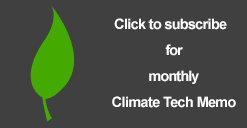Hard Data vs. Soft Data – Predictive B2B Modeling (Part 4)

Data rules the B2B forecast, so when we have a choice between hard data and soft data, which do we pick? Let’s say we pick soft data, believing it to be the only thing we can obtain from our human sales team. Next, since forecasts become more accurate when data becomes more accurate, let’s ask the sales team to provide only accurate data. Makes sense, right? However where do the team members get more accurate data? If I say “Data from the sales team is always ‘soft data’” will anyone be offended?
This post is about putting sales-provided data under close inspection, with a nod to tech innovator Jeff Wilke of Amazon, who said “uninspected data is always wrong.”
Can we hunt and gather good data, or do we need to build it from scratch?
Let’s start by considering the quality of data that comes from the sales team, and also consider data that comes from inside the customer organization. Yes, B2B customers create forecasting data while evaluating spending or investment plans. More about that later. Meanwhile, the sales opportunity data has an important job to do.
The Duties of Data
No, not “Data” the fascinating Star Trek character, just the boring pre-sales data that records qualification and estimates of $value, probability and timing. First we find a “Champion” with an interest in what we do. Next we consider their problem-to-solve, and how we would solve it – with our solution naturally. So far so good. Then our champion starts to ask for things – e.g. a demo, product specs, pricing. We respond with a more detailed needs analysis.
Should we then submit a proposal? In my view it will be treated as a vendor proposal, and therein lies some danger. The quality of champion efforts can be highly variable. So what is the job of the champion? Their real job, in my experience, is to create a compelling internal business plan – or at least the executive-level key elements of a business plan. Some relish that challenge and are good at it. Some are not so good at it, and the situation becomes a stalled deal.
Now here’s the rub – deal data is fed into the forecasting pipeline by the sales team for all opportunities, including many which eventually become stalled deals. The deal data has an important job to do, enabling an accurate sales forecast. The more this data is rolled up and consolidated for senior management, the more it looks like hard data. However, the data is always soft, always wrong, and it fails to do its duty.
Different Data – the hard secrets of B2B customers
Meanwhile, inside the customer – numerous things are happening. Budgets are being formed, and budgets are being spent. Money is in finite supply, and requests for money are common. Like many things in life, “capacity planning” is going on, constantly. Projects are approved, cancelled, or delayed by a constant battle for priorities and funds. These debates are hard work, yet they create a lot of “hard data” along the way. The truth is that a parallel version of our forecasting data is being created by events inside the customer organization. Often the situation doesn’t look as good as what we have in the sales-filtered forecast. Why?
There are a couple of things happening here that we can consider – one is the way vendor proposals are received. In many cases senior people ignore them. They seem too long, and full of vendor puffery (well, we call it positioning, or maybe boilerplate in a more candid moment…). They are unrelated to the specific budget debates going on among insiders. Senior people often need a summary memo to be written, which we can call the “internal proposal”. For sales success, the champion must create a strong internal proposal. It must cover specific needs and business drivers in a concise yet engaging way. The business investment needed must be supported by strong budget drivers. The best internal proposals will be integrated well with other things going on in the organization, already approved and given a priority for resources. In a nutshell, the best internal proposals have synergy with multiple existing parts of the organization’s annual plan.
The effect created is to have compelling urgency to act – with people saying “how can we refuse?” and “let’s proceed now!” Or the internal proposal may be weak or non-existent. In many cases the vendor proposal may lead to customers using an “off ramp” when interest declines, however their idea of an off ramp is a harsh one – just ghosting a vendor. In many cases the champion will say (…if you can reach them) that the deal is alive simply because it is not dead. Woops – now we have a stalled deal, with a much-delayed awareness that it is stalled.
Harder data – Setting our sights
All along this path the customer has internal indications showing the likelihood of a go or no go decision. These indication can be organized into forecasting data, and it always turns out to be “harder data” than the subjective opinions of sales teams. So, in conclusion the data inside the customer organization can be the “hard” data support we need for an accurate forecast.
All that is needed is a framework for a buyer to share their purchase progress data in a fashion which lets us build an accurate forecast. And of course a playbook to allow sales teams to get that level of customer collaboration. Does this sound hard or easy? That is tough to answer, but it is feasible, and we will see a proven method described in chapters to follow. Also. for a deeper dive check out our webinars.



Follow Us
Follow us on LinkedIn for updates.